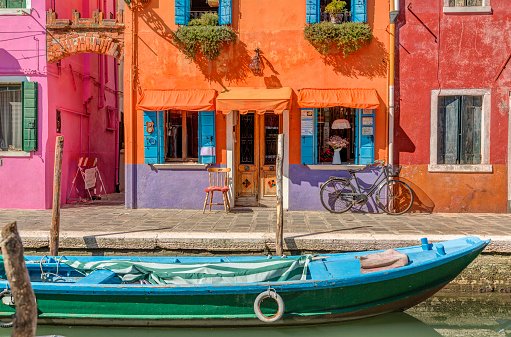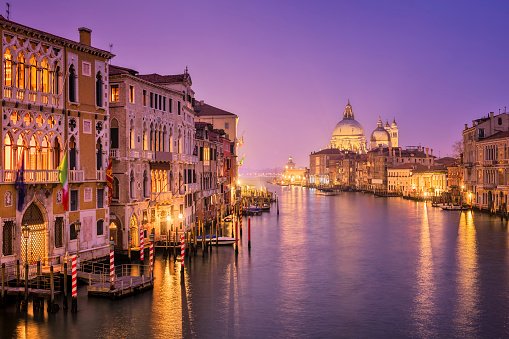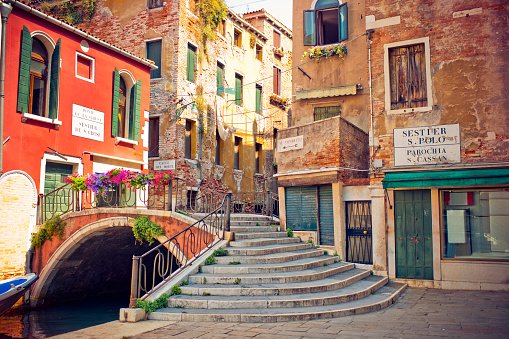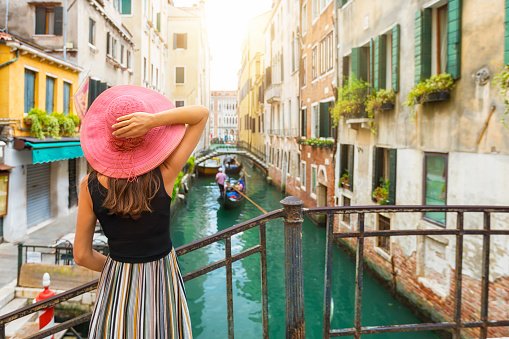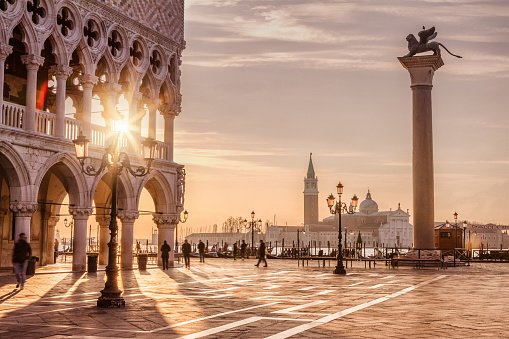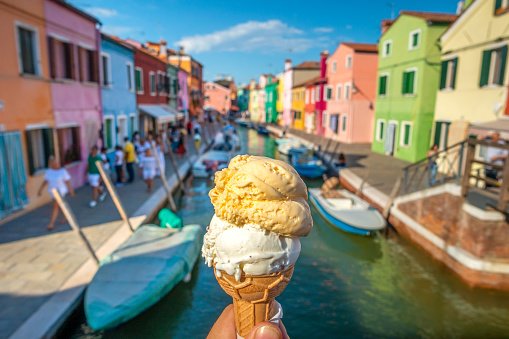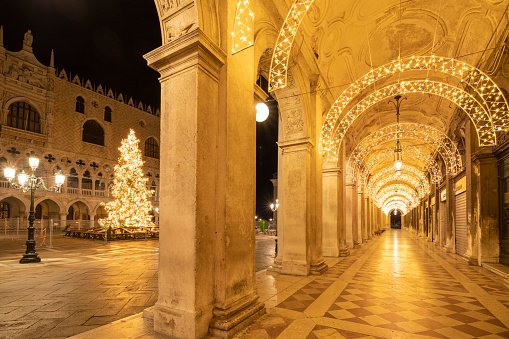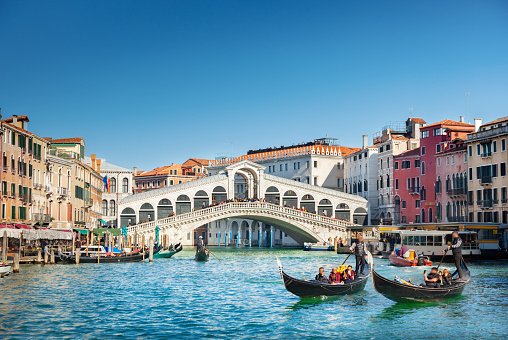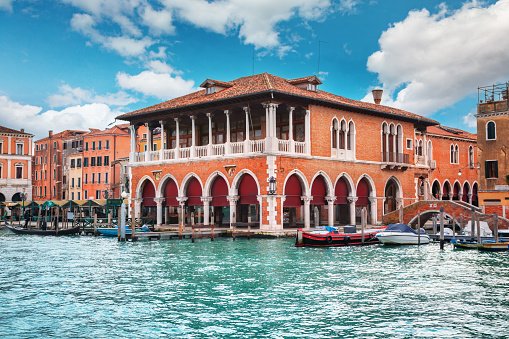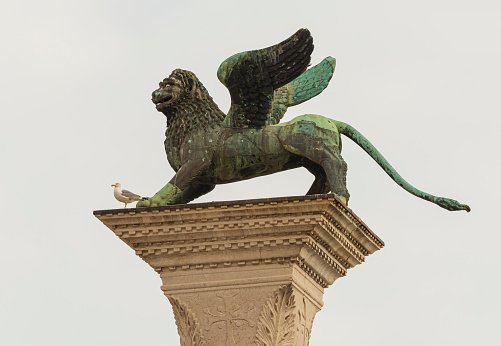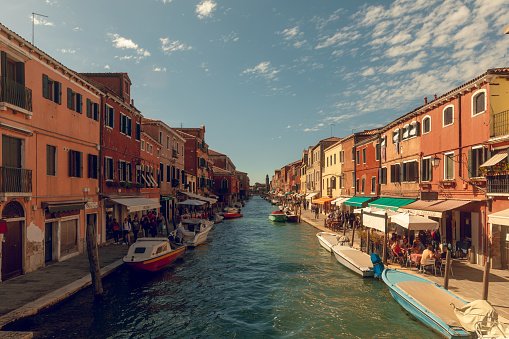
Venice
A car-free city of islands linked by bridges and famed for its Gothic and Byzantine architecture, facing challenges like flooding and overtourism.
Venezia- Key information
Venice, known in Italian as Venezia, is a unique city situated in northeastern Italy that has existed since the 5th century AD when it emerged from a collection of islands in the Venetian Lagoon. Famous for its network of canals, the city has over 150 waterways and 400 bridges connecting its islands. As a car-free urban area, Venice relies on boats for transportation. This offers both locals and visitors an extraordinary urban experience. The architecture in Venice exhibits Byzantine and Gothic influences, with landmarks like the Basilica di San Marco underlining the city’s story. Despite issues like flooding and over-tourism, Venice remains a major centre for international tourism.
- Quality of Life
- Quality of Infrastructure
- Quality of Economy
- Region
- Elevation
- Population
- Real Population (5km band)
- Climate Description
- Air Quality Rating
- Avg Download Speed (Mbps) / Avg Upload Speed (Mbps)
- Walkability
- Housing availability
Venezia Demographics
Population
Real Population (5km band)
Birth to Death Ratio Percentile
Example: Low percentile (near 0): The location has a relatively low birth to death ratio compared to others in Italy. Mid-range percentile (around 0.5): The location has an average birth to death ratio. High percentile (near 1): The location has a relatively high birth to death ratio compared to others.
Population Data Source
ISTAT,2023
Total Tourists (2023)
Touristy Index (2023)
Income per capita (2023)
Income rank in Italy (2023)
1154 out of 7901
Infrastructure and Connectivity
Closest Airport
Venice Marco Polo Airport
Drive time to Airport
Distance to Closest Beach Resort
Distances to Major Airports
Infrastructure & Amenities
POIs 10km 30km
| POI_Type | 10km | 30km |
|---|---|---|
| Auto Repair Shops | 26 | 1.099 |
| Bars | 8 | 929 |
| Cafes | 5 | 385 |
| Cinemas | 11 | 44 |
| Dentists | 25 | 202 |
| Golf Courses | 1 | 13 |
| Gyms | 74 | 372 |
| Hiking Trails | 9 | 55 |
| Historical Sites | 79 | 198 |
| Hospitals | 7 | 45 |
| Libraries | 13 | 51 |
| Museums | 35 | 103 |
| Parks | 5 | 154 |
| Pharmacies | 29 | 172 |
| Restaurants | 123 | 990 |
| Shopping Centres | 7 | 90 |
| Spas | 26 | 669 |
| Supermarkets | 68 | 429 |
Within 10km
Healthcare & Safety
Nearest Hospital Name
Ospedale dell'Angelo-P. Soccor
Seismic Zone (risk of earthquakes)
Moderate to Low Earthquake Risk
Road Accidents Rate per 10k Inhabitants
Car Insurance Price Index
Housing & Property Market
Housing availability
High
Property Prices per m²
Connectivity & Digital Access
Walkability Description
Very Walkable
Avg Download Speed (Mbps)
209
Fast Download Speed (Mbps)
271
Slow Download Speed (Mbps)
139
Education
Avg Schools Ranking (All Criteria)
Bottom 30%
Avg Schools Ranking (Standardised Tests)
Bottom 30%
Counts of School
| Town/City | Primary Schools | Kindergartens | Comprehensive Schools | Medium High Schools | Scientific High Schools | Technical Commercial Schools | Classical High Schools | Industrial Technical Schools | Higher Education Institutes |
|---|---|---|---|---|---|---|---|---|---|
| Venezia | 51 | 27 | 17 | 17 | 3 | 3 | 2 | 6 | 8 |
Climate & Weather
Precipitation
Average (41st-50th percentile)
Sunshine
Above Average (51st-60th percentile)
Snowfall
Somewhat Low (21st-30th percentile)
Min Annual Temperature (°C)
1.2
Max Annual Temperature (°C)
29.9
Climate Description
Venezia has a mild climate with comfortable winters and warm summers. The city enjoys many sunny days, which is perfect for outdoor activities. Winters can bring light snow, adding a special charm to the canals and buildings. Summers are ideal for exploring the city's art and architecture. Rainfall is spread out throughout the year.
Annual Temperature Chart (Min)
Climate data provided by Open Meteo, based on 2010–2022 averages.
| Town | Min Temp Jan | Min Temp Feb | Min Temp Mar | Min Temp Apr | Min Temp May | Min Temp Jun | Min Temp Jul | Min Temp Aug | Min Temp Sep | Min Temp Oct | Min Temp Nov | Min Temp Dec |
|---|---|---|---|---|---|---|---|---|---|---|---|---|
| Venezia | 1,20 | 2,80 | 6,00 | 10,60 | 14,20 | 19,00 | 21,30 | 20,90 | 17,00 | 12,50 | 7,90 | 1,90 |
Annual Temperature Chart (Max)
Climate data provided by Open Meteo, based on 2010–2022 averages.
| Town | Max Temp Jan | Max Temp Feb | Max Temp Mar | Max Temp Apr | Max Temp May | Max Temp Jun | Max Temp Jul | Max Temp Aug | Max Temp Sep | Max Temp Oct | Max Temp Nov | Max Temp Dec |
|---|---|---|---|---|---|---|---|---|---|---|---|---|
| Venezia | 7,6 | 9,80 | 14,50 | 18,80 | 22,50 | 27,30 | 29,80 | 29,90 | 25,00 | 19,40 | 13,80 | 8,60 |
Sunny Days By Month
Climate data provided by Open Meteo, based on 2010–2022 averages.
| Town | Sunny Days % Jan | Sunny Days % Feb | Sunny Days % Mar | Sunny Days % Apr | Sunny Days % May | Sunny Days % Jun | Sunny Days % Jul | Sunny Days % Aug | Sunny Days % Sep | Sunny Days % Oct | Sunny Days % Nov | Sunny Days % Dec |
|---|---|---|---|---|---|---|---|---|---|---|---|---|
| Venezia | 42 | 38 | 55 | 55 | 61 | 67 | 71 | 71 | 57 | 40 | 31 | 41 |
Environmental & Air Quality
Classifications
PM10
Fair
PM2.5
Fair
NO2
Good
SO2
Good
O₃
Fair
Air Quality Rating
Air Quality Description
In Venezia, the atmospheric conditions reflect a moderate interfusion of pollutants. According to metrics, particulate matter and ozone concentrations sustain a level that is generally perceived as fair—neither acutely pristine nor significantly degrading. Notably, nitrogen and sulfur dioxide levels maintain commendable lower concentrations, indicating efficient management or lesser emission of these gases. For those contemplating residency here, the air quality presents no severe deterrent, supporting a conducive environment for everyday activities and leisure strolling along its historic canals. Overall, Venezia’s air profile balances between urban demands and maintaining acceptable air purity standards.
Town Descriptions
Getting There
Venezia is accessible via the Marco Polo Airport, linked by the Alilaguna water shuttle. The Venezia Santa Lucia railway station offers Eurostar, Intercity, and regional services. Automobile access is restricted; parking is available at Piazzale Roma and Tronchetto.
Getting Around
Exploring the city is best done by water bus or gondola, with comprehensive vaporetto services linking the islands. Navigating the intricate network of canals is efficient and scenic, while walking offers intimate access to Venezia’s hidden alleys and bridges, though it can be labyrinthine for new visitors.
Local Cuisine
Traditional dishes in Venice feature seafood prominently, including sarde in saor, an agrodolce sardine dish known for its bold flavours. Risotto al nero di seppia, with its striking black squid ink, epitomizes the innovative use of local ingredients. Small bites such as cicchetti, akin to Spanish tapas, allow diners to sample a variety of dishes at bacari (wine bars) located throughout the city.
Green Areas and Parks
- Giardini della Biennale gardens are located in the Castello district, are a great retreat, and are a major venue for the Venice Biennale, one of the most prestigious cultural exhibitions in the world. The well-maintained lawns and tree-lined avenues characterise them.
- Parco delle Rimembranze is situated on the eastern tip of Venice in the Sant’Elena district. This park is a living tribute to those who fell in World War II. It features expansive green lawns, shaded areas under mature trees, and breathtaking views over the lagoon.
- Giardino Papadopoli is located near Piazzale Roma and is one of the few green spaces in the city centre. The garden is decorated with statues and shaded pathways.
- Giardini Reali is situated close to Piazza San Marco. These royal gardens were recently restored to their former glory, and they offer beautiful views of the Grand Canal.
- The Island of Sant’Erasmo is known as the “vegetable garden of Venice.” It is more rural than other parts of Venice and is characterised by green fields, vineyards, and orchards. It’s a perfect escape for those looking to enjoy nature and agriculture in a less touristy part of Venice.
✅ Pros
Venice’s history as a former maritime power enriches its cultural landscape, appealing to history enthusiasts. Its well-linked transport includes Marco Polo Airport and Venezia Santa Lucia station, facilitating travel. Exploring by water bus or on foot reveals a scenic cityscape. Green spaces offer serene escapes and recreational activities.
❌ Cons
High living costs and tourist congestion can detract from daily convenience. Limited healthcare facilities pose challenges for residents. The city faces periodic flooding, particularly during ‘acqua alta.’ Job opportunities are primarily in tourism, restricting career options. Regular maintenance challenges due to saltwater exposure impact the buildings and infrastructure.
FAQs
How does one navigate Venice given its unique layout?
In Venice, transportation is predominantly by water. The vaporetto service acts as the main public transport system, efficiently linking the various islands. For more private or scenic travel, gondolas are available, though primarily used by tourists. On land, walking is practical and allows for a better exploration of the city’s numerous alleys and iconic bridges.
What are the practical considerations for daily living in Venice?
Residents must adapt to a lifestyle without cars, relying on boats or walking for much of their transit needs. High living costs and tourist influxes pose significant challenges, impacting everything from grocery shopping to local commutes. Additionally, while picturesque, the city’s infrastructure contends with issues from regular flooding and deterioration caused by saltwater.
What job opportunities exist in Venice?
Venice’s economy is heavily oriented towards tourism which provides various employment options in hospitality, retail, and tour services. However, this concentration in one sector limits diverse career opportunities, particularly for those seeking roles outside the tourism industry.
Related Posts
More questions about Venezia ? Ask Magic AI.
Our innovative AI assistant is eager to help. Try it out for free here:

